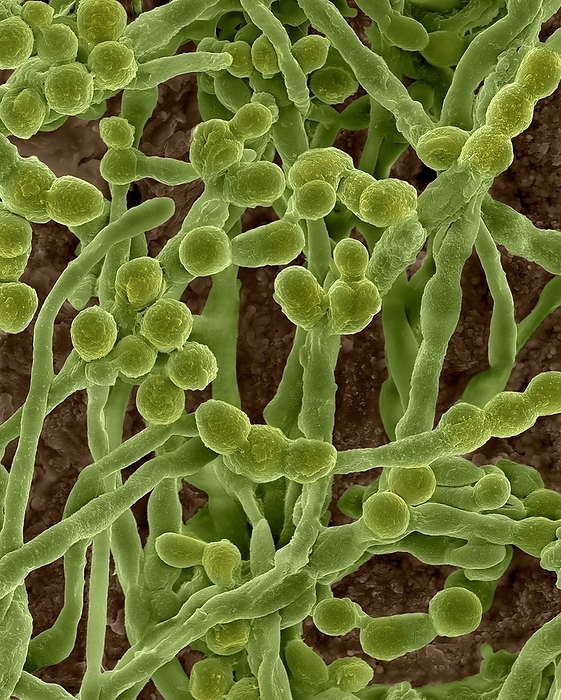
RM
Mould (Cladosporium sp.) hyphae and spores, SEM
Coloured scanning electron micrograph (SEM) of the common environmental and allergenic mould (Cladosporium sp.); fungal hyphae producing spores. This genus is the most common airborne mould. Also known as Hormodendrum sp. This specimen was found on the inner surface of a building's air supply duct. This genus is the most common outdoor airborne mould but may occur in homes. It is an allergenic mould producing over 10 different types of antigens. The spores are easily made airborne and are a common cause of respiratory problems. It is frequently found at elevated levels in water-damaged environments. Cladosporium can cause mycosis and extrinsic asthma (immediate-type hypersensitivity: type I). Acute symptoms include oedema and bronchospasms, chronic cases may develop pulmonary emphysema Cladosporium spp. can also be associated with the spoilage of refrigerated meats. Magnification: x340 when shortest axis printed at 25 millimetres.

More
Top Categories
